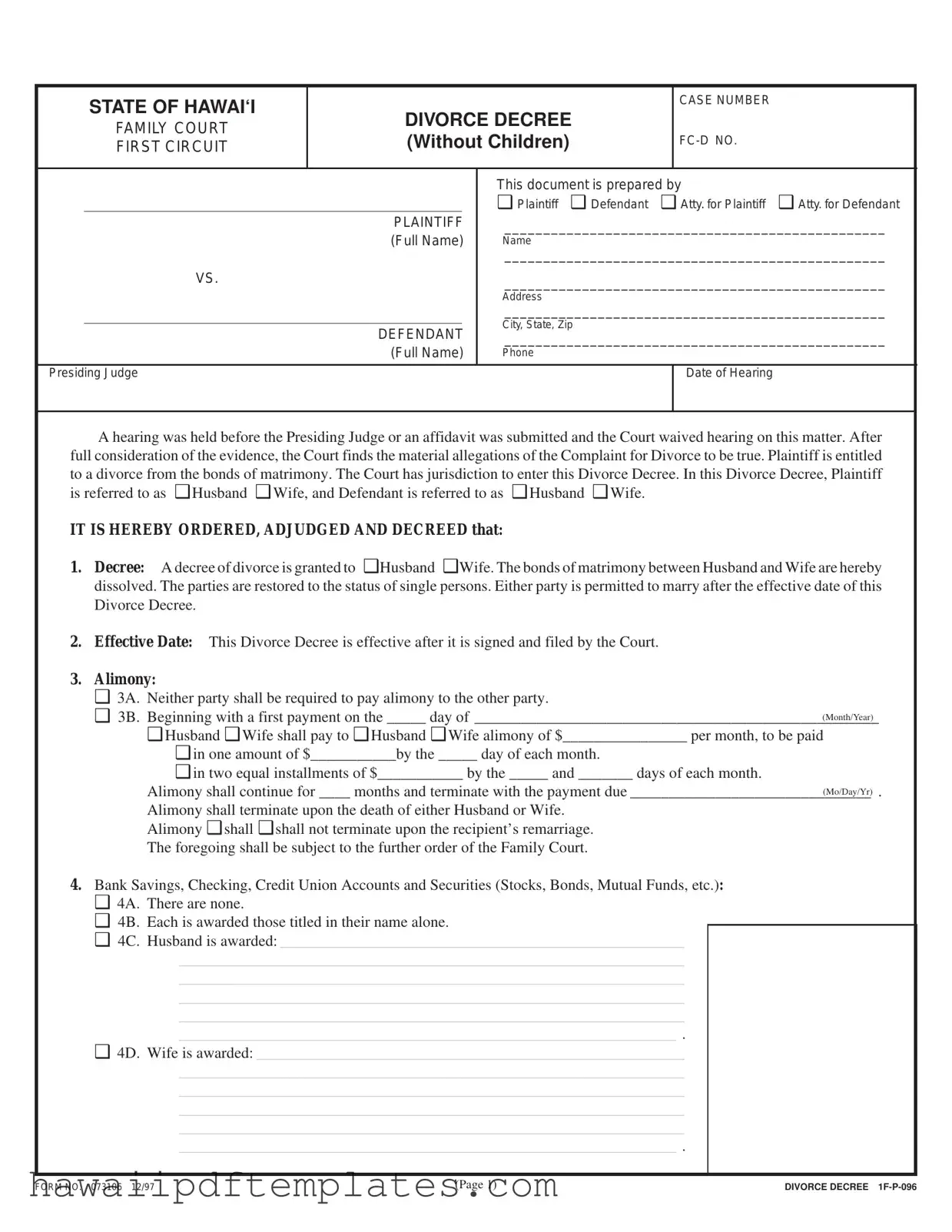Divorce Decree Hawaii PDF Form
The Divorce Decree Hawaii form is a legal document that officially dissolves a marriage in the state of Hawaii. This form is essential for couples who wish to end their marriage without children involved, providing a clear record of the divorce terms. Understanding this form can help ensure that all necessary details are addressed, allowing both parties to move forward with their lives.
If you're ready to fill out the Divorce Decree Hawaii form, click the button below.
Customize Form Online
